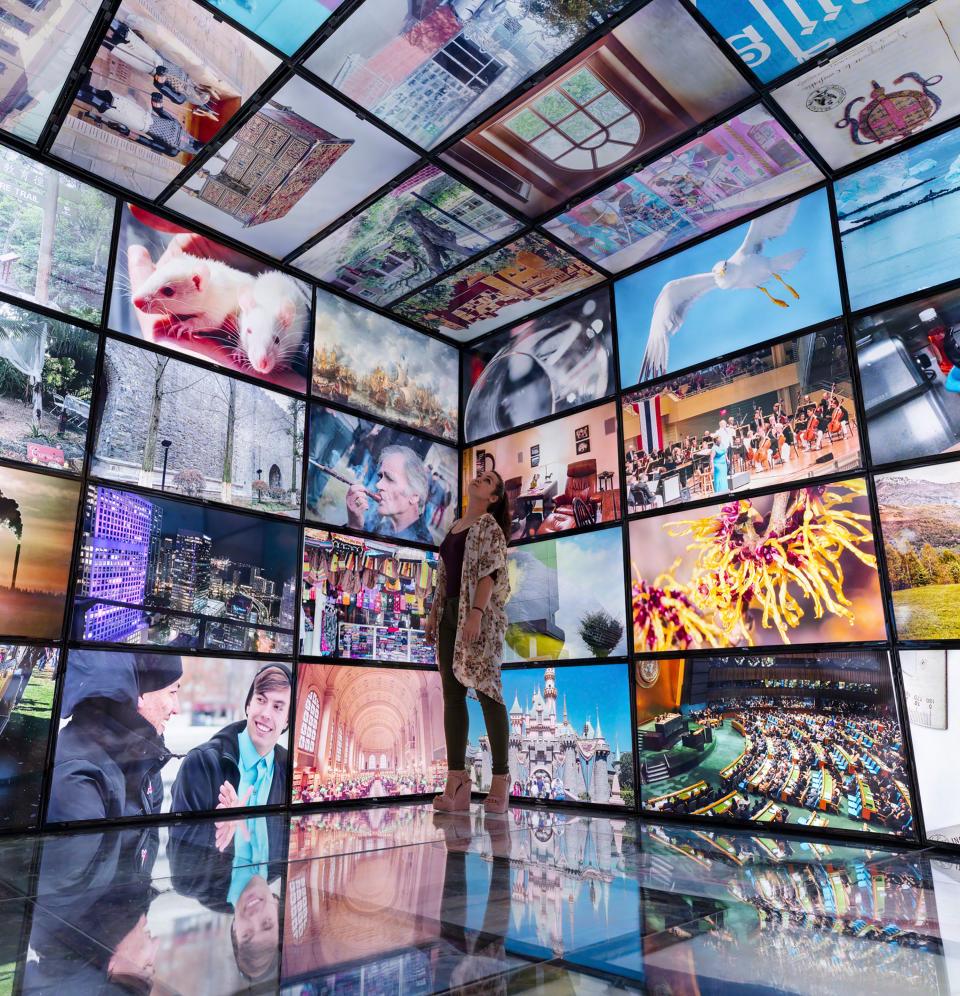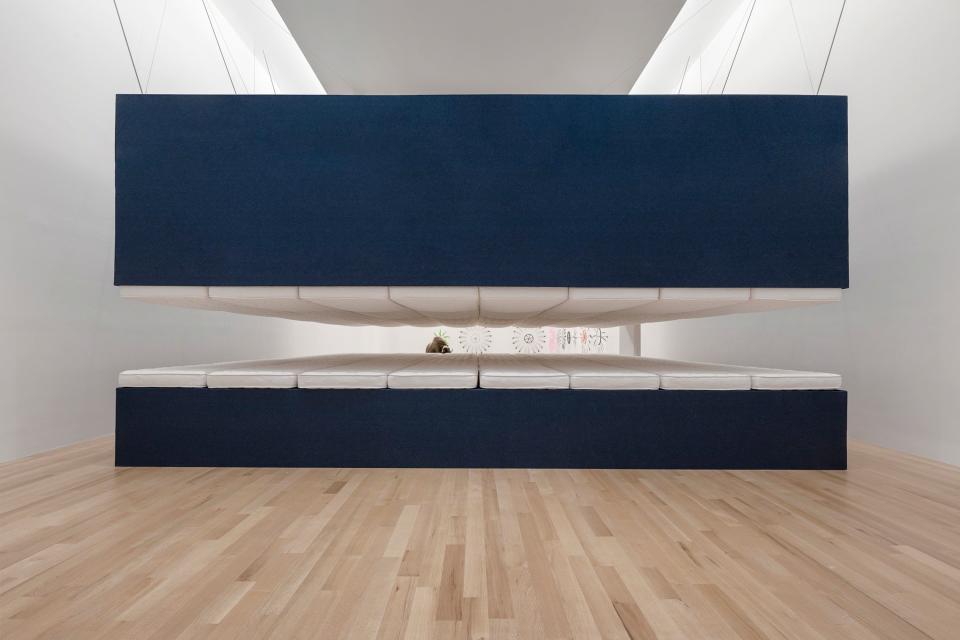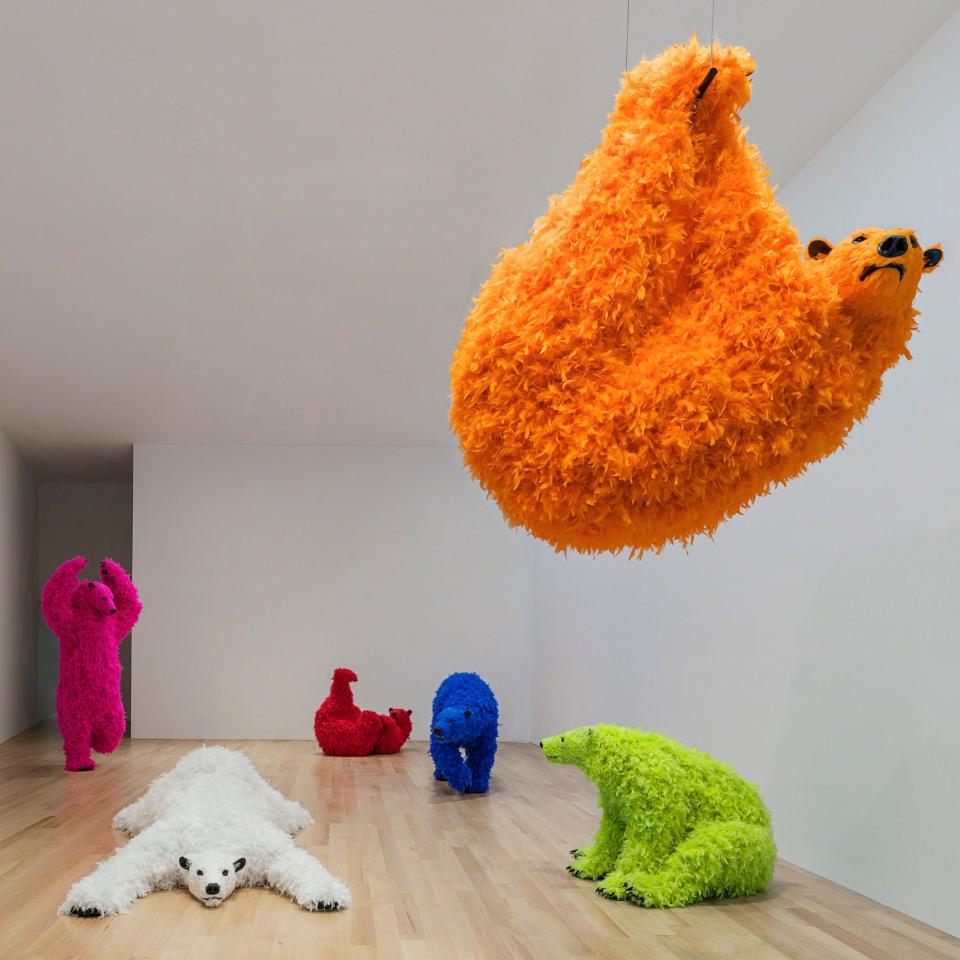Paola Pivi’s Transporting Exhibition Is a Whimsical Comment on Dark Realities
“I see lies everywhere—switch on the television, it’s lies. Everything is lies,” said artist Paola Pivi in April 2016. Oh, sweet innocent; little did she know what was coming. (Fake news everywhere!) Intellectuals—artists, researchers, scientists—have a certain regard for the truth, she told her interviewer. But when you step into “the outside world,” the “level of lies is overwhelming.”
The mendacity of the ordinary is a theme explored in Pivi’s new exhibition, “Art With a View,” on now through March 2019 at Miami’s Bass Museum. The show builds on the Milan-born artist’s first solo North American installation, staged two years ago at Dallas Contemporary, and includes much of the work that was on show there, with a few, prescient new items.
One of those, a direct reflection on Pivi’s experience in the intervening time since her last show, is titled, tellingly, Lies. An elevated room in which the floors and walls and ceilings are TV monitors that flash a series of what seem to be semi-generic outtakes from an images archive (a baby in an autumnal sweater, popcorn, ducks in a pond) combined with more specific, individual images (a curator and her boyfriend). There are 40,000 of them in all, and the cumulative effect is an infinity room spawned in the more banal corners of Getty archives. It’s also a little hot—thanks to the electric energy of 92 flashing monitors—a little loud, and more than a little uncomfortable. A blaring banal soundtrack only amplifies the discomfort: Inside the room, a neutral voice reads lies, some comic (“Cheese is served here”), some gesturing toward a more ominous overtone (“Everyone here is a climate-change expert”), some startlingly personal (“You can sleep here tonight”). The piece was conceived in response to a custody case involving Pivi’s adopted son and the falsehoods she says were propagated in order to challenge her parental rights. But the work has a much more general resonance, as well: The untruths are omnipresent, and their ubiquity can give the sensation that there’s no escape.

In another room, the other new piece in the exhibition, World Record, speaks directly to the assault imposed by Lies. World Record is composed of 80 mattresses, half of which are laid upon a giant black platform, the other half suspended from the ceiling, forming a narrow space about three feet high lined with mattresses. It’s a work with tremendous architectural support behind it, and yet the effect is light and carefree: Visitors are encouraged to climb into the space, where noise is muffled and the view constrained. Crawling through it was simultaneously claustrophobic and soothing, the expanse of the identical mattresses like a plush, monochromatic play space or a padded chamber turned on its side and squished. I can’t imagine anyone fully settling in, but there was something soporific about the work. That is until you realize you’re fully on display to other museumgoers—framed by the looming top mattresses and boosted by those on the bottom. There wasn’t enough room to stand, so I had to crawl, commando-style, to exit. In this sense, it’s a work that not only responds to Lies but complements it. We are always either consuming someone else’s performance or performing—even unwittingly—ourselves.

Pivi’s work often has this kind of direct, sensory appeal. If it is not always as participatory as these new pieces, placing you in positions of auditory assault and on the tipping point between comfort and discomfort, it often, as she once put it, “tickles your brain.” When she described her work in that way, she was speaking of the bicycle wheels repurposed as freewheeling cogs, with feathers radiating out from the spokes in a carnivalesque celebration. (These are also included in the show.) Pivi has said that the starting point for these sculptures was Marcel Duchamp, but it’s hard to imagine a more lighthearted iteration on Duchamp’s earthbound ready-mades. “People act differently around this art,” says Justine Ludwig, curator of the Dallas Contemporary exhibition and the current executive director of Creative Time. “It affords them a freedom that they often left behind as children.”
Indeed, there is a playfulness to much of Pivi’s work. Other new pieces, I Am a Cool Strange Light Ball and I Am a Cool Strange Light Ball Too—names that poke fun at any high-mindedness—are composed of miniature Vitro chairs arranged around a lightbulb. And this joviality most famously plays out in Pivi’s neon feather–covered polar bears, which the artist positions in whimsical stances: stretching their arms in the air, lying on their backs like someone is tickling their bellies, splayed on their stomachs—just a shade shy of looking like a rug. Pivi seems to have kept an explicit environmentalism out of her work, but it is hard to look at these creatures and not feel shades of desperation for the animals’ rapidly disappearing habitat. Even with the artist’s most colorful and exuberant pieces, there are shadows implying sinister depths.


